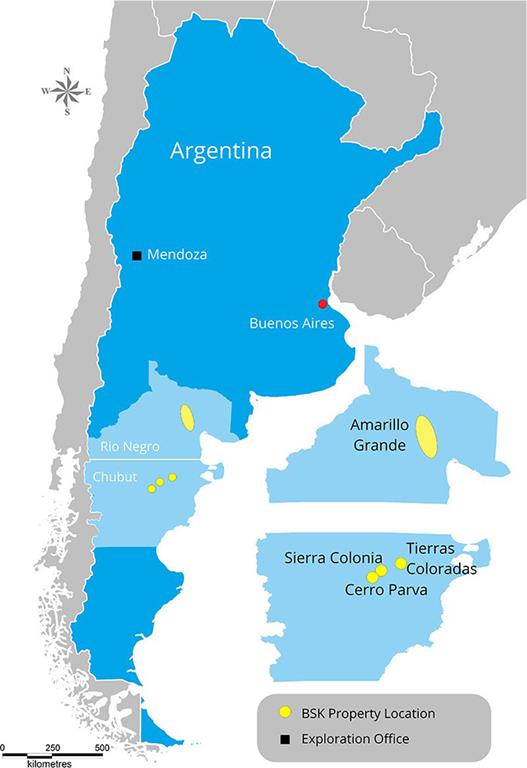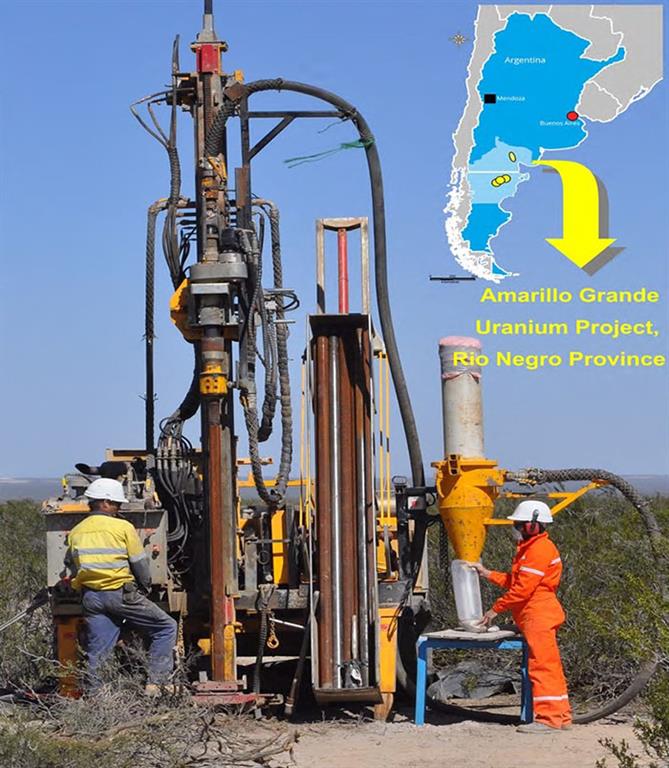"I would submit to you that within the intermediate term time frame, that is, the 3- to 5-year timeframe, we have two expectations. One alternative is that the price of uranium goes up to the cost of production or the other is that the lights go out. And my suspicion is that it will be the former rather than the latter." - "Sprott’s Thoughts" Rick Rule, March 2017
Contrarians did well as some uranium juniors followed the subsequent post Xmas price correction to the current $24 level with gains of in some cases multiple 100’s of percent.
In the new Trump regime uranium prices started rising almost immediately after the polls closed on November 8th, 2016. Since then, the bellwether uranium ETF, URA is also up impressively, as is bellwether U308 stock and Cameco. The former rose from $12 to $17 and Cameco is up to $11 from $8.
Cameco states: "Ux Consulting Company, LLC (UxC) reports that over the last four years only 245 million pounds have been locked-up in the long-term market, while over 635 million pounds have been consumed in reactors. As annual supply adjusts and utilities’ uncovered requirements grow, the pounds available in the spot market won’t be enough to satisfy the demand."
This supply/demand discussion is well illustrated in Argentina. Nikolaos Cacos President and CEO of Argentine-focused Blue Sky Uranium Corp (TSX-V: BSK, FSE: MAL2; OTC: BKUCF) states: “BSK is targeting the Argentina market where growing nuclear power demand has no local uranium supply; all uranium is imported.”
The Argentina Atomic Energy National Commission’s (CNEA) mandate-- To ensure the supply of domestic uranium for nuclear power plants in operation, under construction and planned” is what fuels BSK aggressive development activities.”
This growth outlook for the Argentina nuclear industry Government has the goal to more than double nuclear power usage—and attendant uranium use-- by 2025 to 1.25 million lbs.

A local uranium supply, such as those Blue Sky is developing, would have a significant cost advantage over imports. Argentina’s need for security of supply could provide a “guaranteed” first customer for a domestic supplier. Blue Sky has exclusive rights to more than 420k hectares. (5200 sq.km.)
On March 20, 2017, Blue Sky announced that it expects to release results soon from its completed drilling program at its Amarillo Grande project in Rio Negro province; 94 holes drilled totaling 1276 metres. BSK’s crews are now moving onto the Anit area, approximately 50 kilometres to the northwest along the 140-kilometre long uranium trend that comprises the Amarillo Grande Project.
"We are excited to be active in the Province of Rio Negro where a thriving nuclear converter industry exists since the 1970s, but no uranium production," stated Nikolaos Cacos, President and CEO. "Blue Sky's 420,000 hectares of property situated in two distinct regions has the potential to become the first domestic source of uranium for Argentina. The current program at Amarillo Grande is testing the mineralization occurrence at surface, and, depending on results, would be expanded to test at depth."

The Amarillo Grande Project could well be the first domestic suppliers of uranium in Argentina, which is growing rapidly. The Company’s further goals include adding areas of exceptional uranium potential. As well, BSK plans to be self-financing as soon as practicable.
BSK has several competitive advantages and barriers to entry, these being primarily:
- No domestic uranium supply in Argentina means there is an opportunity window for local, low-cost, near-term producers to supply the local nuclear market
- Blue Sky controls new uranium district: Amarillo Grande Project in Rio Negro province
- Near-surface mineralization
- Expansion potential along trend and at depth
- Mining and Nuclear permissive jurisdiction
- Exclusive rights to over 280,000 in Rio Negro
- 140 km long trend of uranium mineralization
Blue Sky’s actions are all geared toward producing an NI 43-101, again as soon as practicable. Pending drilling results should establish more insight into the reserve potential of these unique properties.
Ever since the Fukashima melt down, uranium has been merely a faint blip on investors’ radar screens. At the very least the recent price rise from $18 a pound to $24 shows a surprising resilience.
According to the World Nuclear Association, there are globally, some 440 nuclear power reactors operating in 31 countries plus Taiwan, with a combined capacity of over 385 GWe. In 2014, these provided 2411 billion kWh, over 11% of the world's electricity.
Over 60 power reactors are currently being constructed in 13 countries plus Taiwan (see Table below), notably China, South Korea, UAE and Russia. In all, over 160 power reactors with a total net capacity of some 182,000 MWe are planned and over 300 more are proposed.
There are obviously potential export opportunities for BSK from Argentina. Its ‘First Miner’ position in a country with an aggressive facilities and consumption growth and no domestic supply of uranium is extremely unique. Limited if any competition and strong government support makes the growth of BSK quite compelling.
Investors have seen shares of juniors in areas such as Canada’s Athabasca region rise and mining investor veterans such as Lundin, Rule, Casey and Friedland have made sizeable uranium bets. As mentioned above, early price moves are agnostic as to company size or geographic location or even level of development.
BSK shares have moved from C$0.22 cents on November 16, 2016 to C$0.49 cents on December 19th, 2016 and has settled in the C$0.39-C$0.40 cent range.
In conclusion, there are several uranium stocks investors could buy. And you’d likely make money: Eventually.
Blue Sky is that type of stock that brings all the standard tenets to a junior miner, but finds itself in the unique position of being in the middle of a country—Argentina—that has an aggressive nuclear power growth plan but imports all its fuel.
Soon, BSK could find itself—and is planning to be—the primary and potentially exclusive source of uranium for Argentina and possibly other South American countries.
Legal Disclaimer/Disclosure: This document is not and should not be construed as an offer to sell or the solicitation of an offer to purchase or subscribe for any investment. No information in this Report should be construed as individualized investment advice. A licensed financial advisor should be consulted prior to making any investment decision. We make no guarantee, representation or warranty and accept no responsibility or liability as to its accuracy or completeness. Baystreet.ca assumes no warranty, liability or guarantee for the current relevance, correctness or completeness of any information provided within this Report and will not be held liable for the consequence of reliance upon any opinion or statement contained herein or any omission. Furthermore, we assume no liability for any direct or indirect loss or damage or, in particular, for lost profit, which you may incur as a result of the use and existence of the information, provided within this Report.